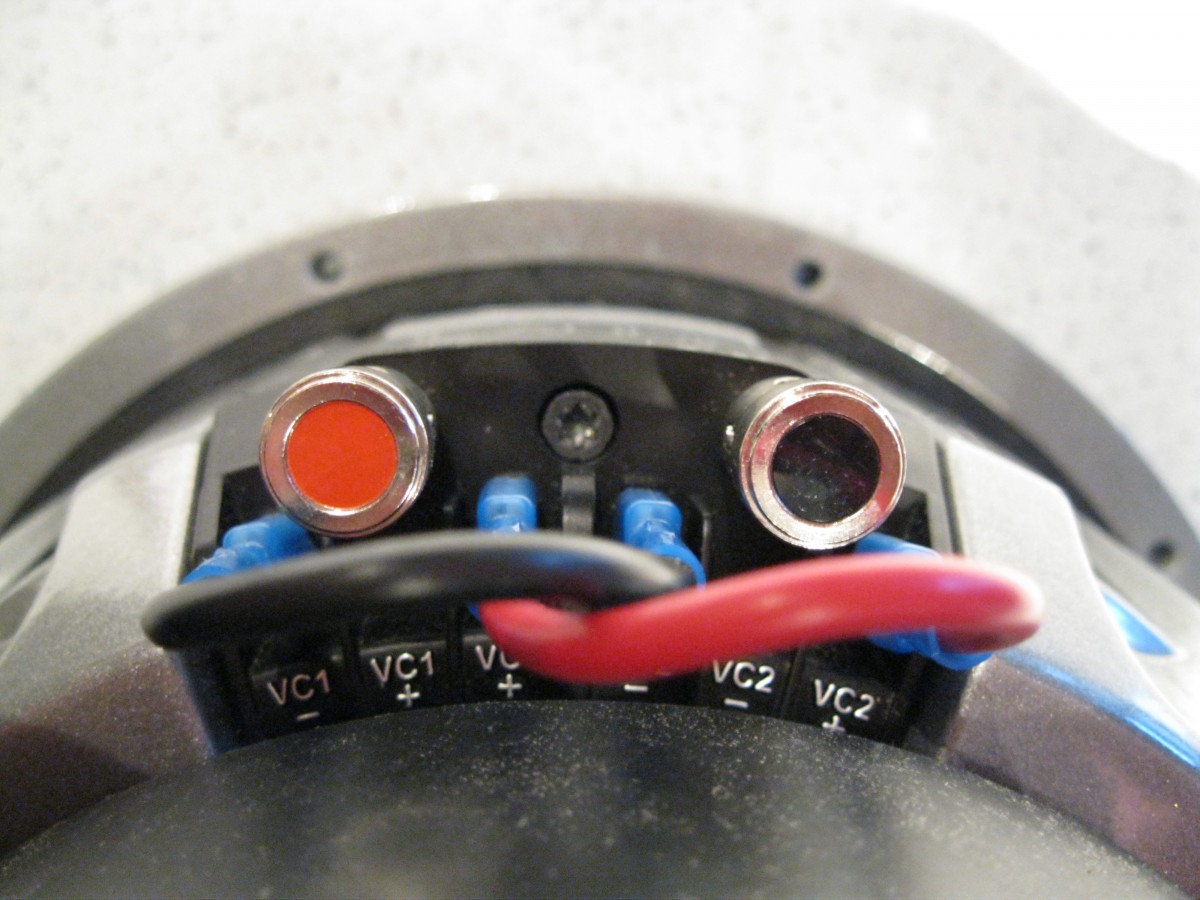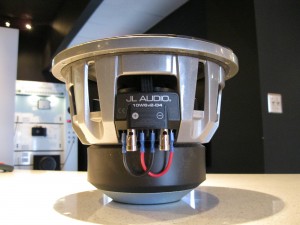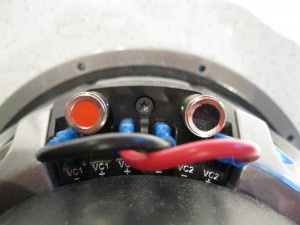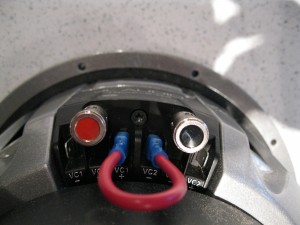What happens to a 2 channel amp when you bridge it? Does it change the impedance?
Estimated read time: 6 minutes 42 seconds. Want to read later?
Yes and no. It doesn’t change the impedance of the speakers you are using, but it does change the impedance that the amplifier itself sees. That’s why you will find multiple ratings on 2 channel amps as there are a few different ways you can run them and one of the more popular ways to run them is bridged. Bridged is a way of mixing both left and right stereo signals from a 2 channel amp. It allows you to run a mono signal. This is great if you plan on using your two channel amp for a sub or subs. How do you make sense of the ratings? Here’s a run down of the typical types of ratings you will see:
X amount RMS power x 2 @ 4 ohms defines using a 2 channel amp to run a pair of full range car audio speakers
Higher X amount of RMS power x 2 @ 2 ohms is the other rating you will see. This is like running two subs that have an impedance of 2 ohms each with one sub on the left channel and one on the right channel.
The last rating you will often see is the combined total of the last rating or Higher X amount of RMS power (combined) x 1 @ 4 ohms.
I’ve been inspired to write this post after receiving an unsettling email from a fellow reader. He has a high powered 2 channel amp that puts out either:
150 x 2 @ 4 ohms
300 x 2 @ 2 ohms
600 x 1 @ 4 ohms
His understanding, as well as my understanding, is this: The last rating is obviously a bridged rating. To bridge a 2 channel amp, you typically use the left positive terminal on the amp and right negative terminal on the amp. See picture below:

Some manufacturers do it a little differently so pay attention to the installation manual. Note this Audison amp doesn’t use the outside terminals, but it is still using left positive and right negative for bridging:

The trick with bridging a 2 channel amp is to remember that the amp will always split and share that impedance between the two channels. In other words, if you bridge a 2 channel amp to a 4 ohm load, the amp sees 1/2 that load or a 2 ohm load per channel. You never want to bridge an amp with an impedance less than 4 ohms. Given this information, it’s safe to assume that the reader’s amp will put out 600 watts RMS when bridged to a 4 ohm load. These two ratings are essentially telling us the same thing:
300 x 2 @ 2 ohms
600 x 1 @ 4 ohms
In this particular instance, the reader is looking at purchasing two subwoofers. The subs are offered in either single voice coil 4 ohm or single voice coil 2 ohm. Well, we know that when we parallel two 4 ohm subs we get a 2 ohm load and if we series two 4 ohm subs we get an 8 ohm load. So we can conclude the single voice coil 4 ohm subs would not be the right impedance to buy.
We know that if we parallel two 2 ohm subs we would get a 1 ohm load and if we series two 2 ohm subs we would get a 4 ohm load. 1 ohm isn’t going to work, but 4 ohm will. So in this situation, the correct answer would be to buy two of the single voice coil 2 ohm subs, wire them in series, then bridge the amp. The amp would put out 600 watts RMS when bridged to the 4 ohm load.
After contacting the manufacturer of the subs, the reader received the wrong information. The manufacturer’s tech support disagreed and adamantly argued that he should buy the two single voice coil 4 ohm subs and series those to an 8 ohm load. He feverishly argued that whenever you bridge an amp it sees half the impedance.
This is true. The amp would technically see 4 ohms. But at 4 ohms, the amp only puts out 300 watts RMS, do you agree?
Here are those ratings again:
- 150 x 2 @ 4 ohms – What we would get if we were to run two 4 ohm subs to each channel of the amp
- 300 x 2 @ 2 ohms – What we would get if we were to run two 2 ohm subs to each channel of the amp
- 600 x 1 @ 4 ohms – What we would get if we were to bridge the amp and give it a 4 ohm load
I consulted with another technician at the manufacturer as I was distraught that such a reputable, long time standing company was giving out such misguided direction. I began to think I was losing my mind when the second technician sided with both of us saying we were both right. How could we both be right? The amp cannot produce the same 600 watts RMS when bridged to either a 4 ohm or an 8 ohm load. If we understand anything about resistance and amplifiers we know that output varies with resistance.
Unless, of course, your company primarily produces amplifiers with regulated power supply’s. An amplifier with a regulated power supply will put out the same amount of power regardless of whether you give it 2 ohms, 3 ohms or 4 ohms. But this, my friends, is not a regulated power supply amp. It’s not a class D mono amp. It’s an old school, class A, high powered, two channel amp and that beast needs a 4 ohm load when bridged to supply you with 600 watts of raw power, damn it.
Even though I’ve been doing this for more than 10 years and have sold more than my fair share of bridged amp setups, I actually started to doubt my understanding when I encountered two manufacturer technicians that believed otherwise. I consulted with my hubby on this one (who has more than 30 years experience in this industry). So here is our conclusion to help YOU, the almighty consumer, navigate the numerous power ratings on amplifiers.
- When you bridge a 2 channel amp (or the rear channels of a 4 channel amp) the amp sees 1/2 that impedance
- Amplifier company’s will provide several different power ratings to help you understand the various capabilities of the amp
- X amount of power RMS x 2 @ 4 ohms means this is what the amp will put out if you hook up two 4 ohm speakers or subs, one speaker or sub to the left channel and one speaker or sub to the right channel. The amp will play a stereo signal in this scenario.
- X amount of power RMS x 2 @ 2 ohms means this is what the amp will put out if you hook up two 2 ohm speakers or subs, one speaker or sub to the left channel and one speaker or sub to the right channel. The amp will play a stereo signal in this scenario.
- X amount of power RMS x 1 @ 4 ohms means this is what the amp will put out if you bridge the amp to a final 4 ohm load. It doesn’t matter if it’s one speaker or two speakers as long as the final impedance at the speaker wire going into the amp is 4 ohms. The amp will play a mixed stereo or mono signal in this scenario.
Let’s take a look at this screen shot from JL Audio:

We can conclude from these ratings that this amp will do the following:
- If you hook up two full range 4 ohm car audio speakers to each channel (left and right), the amp would supply you with 110 watts RMS from each channel.
- If you were to hook up two 2 ohm subwoofers (or two full range 2 ohm car audio speakers) to each channel (left and right), the amp would supply you with 180 watts RMS from each channel.
- If you were to hook up one single voice coil 4 ohm subwoofer and bridge the amp, the amp would supply you with 360 watts RMS total to the one subwoofer.
This last rating demonstrates bridging the amp. The amp is essentially seeing half that final load when bridged. We are mixing left and right stereo and combining both channels to basically create a mono amp. You can see by the ratings that the amp is obviously seeing 2 ohms per channel as the total RMS output at 4 ohms bridged equals that of the two channels run separately with a 2 ohm load on each.
I sincerely hope that helps to clear up confusion regarding what happens to an amp when bridged and what kind of impedance you can give an amp that is being bridged. As a rule of thumb, never bridge an amp with anything less than a 4 ohm load. It will be unstable and heat up and shut down on you.
This experience has taught me there’s even more misinformation out there than I otherwise thought. Do you guys agree with me? Disagree with me? I’d love to know. I really hope this helps everyone out there who plans on bridging their 2 channel or 4 channel amp.



